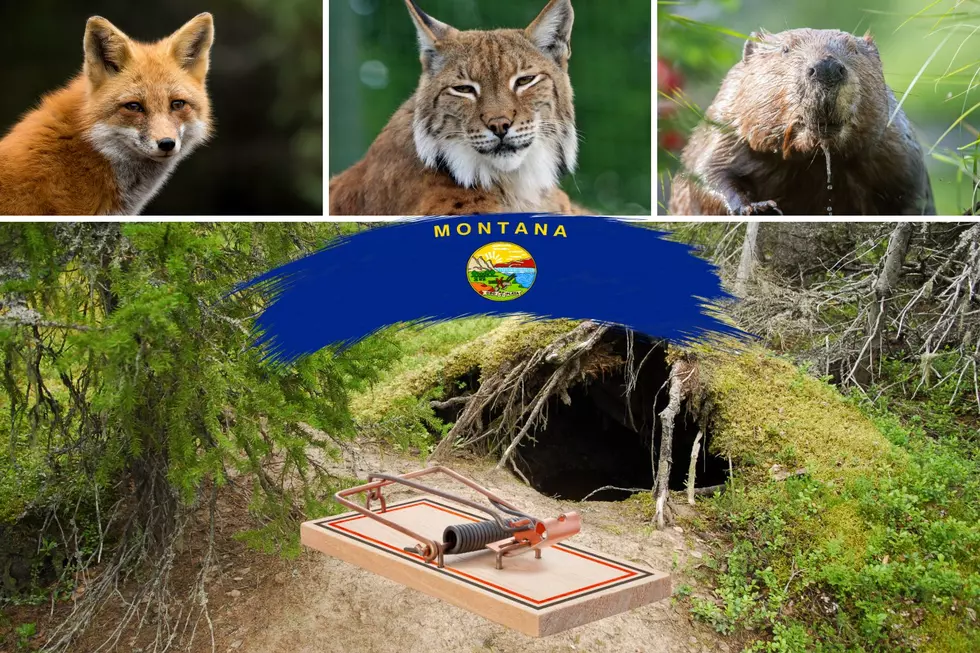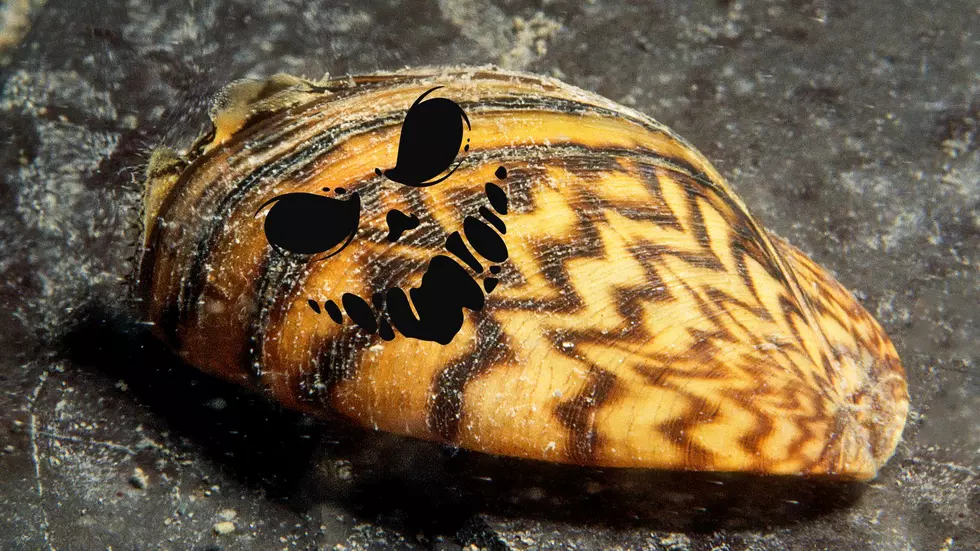
Montana’s Pristine Beauty Is Littered With These 19 Hazardous Superfund Sites
Yesterday, we took a look at how many Superfund sites are located in North Dakota. The Peace Garden State does not have any active sites, and only two historically. The same cannot be said for Montana.

What are superfunds?
According to the EPA, waste dumps, processing plants, factories, and mining sites are all included in a list of sites that are considered superfund sites.
Starting in the 1970s, toxic waste dumps such as New York's Love Canal and the Valley of the Drums in Kentucky received national attention when the public learned about the substantial risk they posed to both human health and the environment.
The 1980 Comprehensive Environmental Response, Compensation, and Liability Act (CERCLA) was lawmakers' answer.
Superfund is a colloquial name for CERCLA. It permits the EPA to remediate polluted areas. Additionally, it mandates that polluting entities either clean up their own mess or pay the government to clean up after them.
When a responsible party cannot be located, the EPA is granted the ability and finances to clean up polluted areas through Superfund.
Montana Superfund Sites
ACM SMELTER AND REFINERY
BLACK EAGLE, MT
Located in Cascade County, Montana, the 427-acre ACM Smelter and Refinery site is right next to the unincorporated village of Black Eagle along the Missouri River. Across the Missouri River from the location is the city of Great Falls.
Building the first smelter at the site began in 1892 by the Boston & Montana Consolidated Copper and Silver Mining Company. The main byproducts of the site's operations were cadmium, copper, zinc, and arsenic.
The concentration, melting, and refining of ore from Butte, Montana, mines commenced operations in 1893. There were also furnaces and electrolytic refineries there. The Anaconda Copper Mining Company bought up the land in 1910. Up until the early 1970s, the plant was still actively involved in zinc refining and smelting.
When the Atlantic Richfield Company (ARCO) bought the land in 1977, it changed ownership once again. Up until the plant's closure in 1980, copper refining persisted.
The refinery's operations for eight decades contaminated the local soil, groundwater, and surface water resources. The refinery's smoke stacks released toxic substances into the atmosphere, such as lead and arsenic. The piles' deposition probably tainted the yards of surrounding homes.
Up until 1915, the Missouri River was the usual destination for smelter waste, slag, flue dust, tailings, and other similar materials. Afterwards, the majority of the waste was dumped at the location. Directly into the river went an estimated 27.5–31 million tons of slag and tailings, according to the State of Montana.
Debris and drainage from the site were discovered to have polluted the Missouri River, which is more than 30 miles downstream.
Throughout the '80s and '90s, ARCO began reclamation and maintenance operations following the smelter and refinery's closure. The Environmental Protection Agency (EPA) investigated the plant in 2002 after receiving a request from the state of Montana. In 2007 and 2008, the Black Eagle neighborhood was the subject of a more extensive site examination.
The EPA took action in March 2011 to prioritize the ACM Smelter and Refinery for the Superfund program.
The cleanup and investigation of the site are still in progress.
ANACONDA ALUMINUM CO COLUMBIA FALLS REDUCTION PLANT
COLUMBIA FALLS, MT
Located in Flathead County, Montana, two miles northeast of Columbia Falls, lies the Anaconda Aluminum Co. Columbia Falls Reduction Plant, also called the Columbia Falls Aluminum Company (CFAC) Plant.
Over the course of its 960 acres, north of the Flathead River, lies a fishery that is home to the bull trout and the westslope cutthroat trout, both of which are listed as vulnerable by the federal government.
The EPA's initial site assessment found that, among other toxins, both surface and groundwater samples taken from the area contained cyanide, fluoride, and other metals.
The CFAC factory produced a lot of used potliner material, which is a category of hazardous waste that the federal government has designated, as a result of the aluminum smelting process. The plant ran from 1955 to 2009. It is well known that cyanide chemicals found in spent potliner material can seep into groundwater.
Atlantic Richfield Company had purchased the plant from Anaconda Company in 1977; CFAC purchased it from them in 1985.
ANACONDA CO. SMELTER
ANACONDA, MT
Located in the southern end of Montana's Deer Lodge Valley, close to the site of the historic Anaconda Copper Mining Company ore processing facilities, lies the 300-square-mile Anaconda Co. Smelter.
Massive copper concentrating and smelting operations started in 1884 at what is now known as the Old Works by ACM and its predecessors. Prior to its closure in 1901, the Old Works stood on the northern bank of Warm Springs Creek, adjacent to Anaconda town.
Located on Smelter Hill, south of the Old Works and east of Anaconda, the Washoe Reduction Works (also known as the Anaconda Smelter, the Washoe Smelter, the New Works, and the Anaconda Reduction Works) started processing and smelting ore in 1902.
In 1977, Atlantic Richfield Company bought out the Anaconda Co. Smelter. After the Anaconda Smelter stopped producing molten salt in 1980, it was demolished not long after. Arsenic, lead, copper, cadmium, and zinc were abundantly created throughout the milling and smelting processes that lasted for a century. Soil, groundwater, and surface water were all polluted with harmful substances due to these wastes.
The Anaconda Co. Smelter site was added to the National Priorities List for the Superfund program in September 1983 by the EPA in order to address the contamination. Administrative orders from the Environmental Protection Agency (EPA) are the primary means by which Atlantic Richfield Co. carries out site operations.
Several sections of the site have had their cleanup done. Ongoing operations and maintenance are taking place at these locations. The remaining regions are currently undergoing cleanup. The finished remedies are now safeguarding people's and the planet's health. To prevent human exposure to waste, entry is controlled in areas where remedies are not complete.
BARKER HUGHESVILLE MINING DISTRICT
MONARCH, MT
The 6,000-acre Barker Hughesville Mining District site may be found in Judith Basin and Cascade Counties, approximately 12 miles east of Monarch and south of Great Falls.
It wasn't until 1879 that the Barker-Hughesville region saw the discovery of rich lead and silver ores. The area was a mining hub until 1893 and again from the turn of the century until the 1940s.
With their waste rock dumps, tailings, and water-seeping mine holes, the site is home to approximately 46 abandoned mines. Metals like lead, copper, zinc, and cadmium have leached into the soil, sediment, groundwater, and surface water from the defunct mines.
BASIN MINING AREA
BASIN, MT
Near the Montana town of Basin, which is not part of Jefferson County, lies the Basin Mining Area. The hamlet of Basin and around 300 separate abandoned mining sites in the Basin Creek, Cataract Creek, and upper Boulder River basins make up about 77 square miles of property.
The Basin Watershed was the site of hard rock mining that started in the 1870s and went on intermittently until the late 1960s. Both people and the environment are put in danger when toxic compounds, including arsenic, cadmium, lead, zinc, silver, and copper, are released.
Soil, sediment, and surface water samples taken all throughout the basin mining area showed increased contamination levels in a 1989 screening site investigation. Furthermore, a sample collected from the Basin Elementary School yard showed evidence of arsenic exposure.
The Montana Department of Environmental Quality (MDEQ) requested that the EPA's Removal Branch investigate the site for a potential removal action after an expanded site inspection of the town of Basin in 1991 discovered excessive levels of lead and arsenic in many residential yards. In 1998, the EPA started a clearance action at the southern end of Valley Street in the town of Basin.
When the Environmental Protection Agency (EPA) first created the Superfund National Priorities List in October 1999, it included the Basin Mining Area. In collaboration with the MDEQ and the United States Forest Service, the EPA is managing and supervising site cleaning.
BILLINGS PCE
BILLINGS, MT
The 976-acre pollutant plume at the Billings PCE site extends for almost three miles into a mixed-use region northeast of downtown Billings, into shallow groundwater.
The plume is composed primarily of chlorinated solvents, specifically tetrachloroethylene (PCE), which have leaked from dry cleaners and laundry rooms in the historic district. There are also isolated pockets of petroleum hydrocarbons that have leaked from underground storage tanks at places like gas stations.
Vapor intrusion is the main worry for human health. Groundwater containing chlorinated solvents and petroleum hydrocarbons has the potential to evaporate into the air, where they can eventually build up in the conditioned spaces of buildings located above. Anyone breathing in PCE-contaminated indoor air may experience immediate symptoms such as vertigo, headaches, nausea, and clumsiness.
Even modest levels of PCE and TCE vapors, when inhaled for an extended period of time, can cause neurological symptoms, immune system issues, liver or kidney problems, and even some malignancies. Drinking polluted water from irrigation wells or using irrigation water for recreational purposes could expose a person to groundwater, even though it is not recognized to have any drinkable uses.
The location was subject to a preliminary assessment in 1993 by the Montana Department of Environmental Quality (MDEQ) in order to pinpoint problem areas and ascertain the presence or absence of contaminants. The MDEQ ended with a "no further action" determination even though subsurface pollution was found at the time since the affected aquifer was not being used as a drinking water source.
The Maryland Department of Environmental Quality (MDEQ) conducted a site evaluation from 1999 to 2001 and found that buildings located above the plume could have indoor air pollutant concentrations that are harmful to building occupants.
The Environmental Protection Agency (EPA) removed and disposed of polluted soil in 2007, injected chemicals to help lower groundwater contamination, and erected a barrier wall around the most heavily polluted groundwater as part of a removal action.
Additionally, seven buildings situated above the groundwater plume had vapor mitigation systems installed by the EPA. Indoor vapor accumulation can be reduced with vapor mitigation technologies. In the same way as a radon mitigation system collects vapour from below a building, this system releases it into the sky above it.
Ever since then, the EPA has been meticulously recording plume characteristics and assessing how well the removal effort was executed.
To describe the present nature and amount of contamination, identify any sources that may be contributing to contamination, and determine if vapor intrusion was continuing to occur, MDEQ produced a remedial investigation report in 2019.
Additional contaminated soil sources were identified, and subterranean soils at many source locations were determined to be continuing to contaminate groundwater, according to the results.
The EPA's cleanup efforts in 2007 did reduce contamination of groundwater, but there is still an unsafe level of contamination in the shallow groundwater plume that exceeds Montana's drinking water requirements for humans.
The site became eligible for government financing to boost environmental research and cleanup actions in 2021 when the EPA put it on the National Priorities List (NPL).
CARPENTER SNOW CREEK MINING DISTRICT
NEIHART, MT
The Little Belt Mountains in southern Cascade County, Montana, are home to the 9,000-acre Carpenter Snow Creek Mining District site. There are a lot of inactive and abandoned mines on the property, so there are a lot of mine-influenced waterways, waste rock, and mine tailings.
The EPA has identified at least 21 of the approximately 96 abandoned mines on the property as potential pollution sources. Metals and other harmful compounds were introduced to soil, groundwater, surface water, and sediment during the course of historic mining operations. We are currently conducting investigations and cleaning up the area.
The discovery of silver deposits close to what would later become the town site of Neihart in the 1880s sparked mining activity in the region. Most of the ore that was mined was silver, lead, and zinc. The 1920s were a time of massive lead and zinc production.
Despite occasional reports of mine development work and production, the mining district has remained mostly dormant since the 1940s. Check out the Abandoned Mines page on the Montana DEQ's website.
EAST HELENA SITE
EAST HELENA, MT
Contamination from ASARCO's century-long smelting operations has been mostly addressed during cleanup efforts at the East Helena Superfund Site.
Reduced levels of contaminants in groundwater, a narrowing contamination plume, the removal of pollutants from an 80-acre evapotranspirative cover, and the restoration of Prickly Pear Creek's natural route as it winds its way through 175 acres of newly created wetlands and floodplain are all positive developments.
After the top lift of the 14-million-ton slag pile is sent to South Korea for recycling, the last corrective measure—grading and capping—to remove the last major source of groundwater contamination has been approved by the EPA.
Thousands of acres of polluted farmland are being rehabilitated at the site, which is situated in East Helena, Lewis and Clark County, Montana, and was home to a lead smelter that ran from 1888 until 2001. All of East Helena, including the site, nearby developments, and farmland, is considered part of the Superfund region.
The soil in the Helena Valley contains lead and arsenic, while groundwater contains selenium and arsenic, due to almost a century of lead and zinc smelting. Spills, leaks, and discharges to both surface and subsurface soil, as well as fugitive emissions from the smelter's stacks and process ponds, were among the sources of contaminants. In the past, groundwater, stormwater, and wind may have all carried pollutants.
The smelter's polluted soils allowed precipitation to seep into the groundwater, where it mobilized arsenic and selenium. The land would be drained of any stormwater that came into contact with the polluted dirt. Groundwater levels were raised beneath the old plant by surface waters from Prickly Pear Creek (PPC) and two artificial lakes, which pushed groundwater through disturbed soils and leached pollutants into groundwater, sending arsenic and selenium plumes away from the site.
Grading and covering the 14-million-ton slag pile is the last big corrective work to be done at the site, but cleanup is almost there.
FLAT CREEK IMM
SUPERIOR, MT
In Montana, near the town of Superior in Mineral County, lies the Flat Creek Iron Mountain Mine and Mill (IMM) site. From 1909 to 1930 and again from 1947 until 1953, the mine produced ores of silver, gold, lead, copper, and zinc. Soil, groundwater, and surface water were all polluted with metals and other harmful compounds as a result of mining operations.
Significant amounts of mine waste contamination were discovered around the IMM site in 1993 during an abandoned mine assessment carried out by the Montana Department of State Lands.
A debris flow involving mining tailings washed into Flat Creek after heavy rains in August 2000 put out a forest fire that had scorched 9,000 acres. The DEQ in Montana petitioned the EPA to conduct an investigation at the site out of concern that the contamination there might be mobilized even further.
There were excessive levels of lead, arsenic, antimony, cadmium, and manganese, according to the EPA's investigation. The EPA also discovered excessive amounts of numerous metals, including lead and arsenic, in samples taken from residential homes and the track field at Superior High School.
In September 2009, the site was added to the National Priorities List (NPL) of the Superfund Program by the EPA. Decisions regarding site remediation remain within the purview of the agency. The EPA, the DEQ, and the United States Forest Service (USFS) are in charge of carrying out and supervising the site cleaning.
IDAHO POLE CO.
BOZEMAN, MT
Gallatin County is home to the Idaho Pole Co. (IPC) Superfund site, which lies close to Bozeman, Montana's northern boundary. Idaho Pole Co. owns about 65 acres out of the total 87 acres on the property. The land is bisected along a short stretch of Interstate 90 (I-90).
From the late 1800s until the early 1940s, the forerunner of what is now known as Burlington Northern Santa Fe Railway Company (BNSF) operated a five-stall roundhouse south of Cedar Street and east of L Street.
In 1945, the IPC wood treatment plant started utilizing creosote to cure and preserve wood. In 1952, the plant made the change to a wood treatment solution that contained pentachlorophenol (PCP) in carrier oil, which is similar to fuel oil like diesel.
Treatment of poles in butt vats was one of the site procedures; pressurized heated retort apparatus was later added in the region south of Cedar Street. There was a stacking of treated poles for drying and transport in the vicinity.
Peeling the poles and storing the wood chips in a bark-fill area to the north of Cedar Street were part of the treatment procedures. The addition of a pressurized heated retort for full-length pole treatment came in 1975. In the early 1980s, the vats that were pole-length were removed.
Additionally, treated poles were stored in a drying chamber before export. Up until September 1997, IPC treated wood using a pressurized, heated retort and butt-dipping vat. After that, the company stopped treating wood.
LIBBY ASBESTOS SITE
LIBBY, MT
Libby was the site of the 1881 discovery of vermiculite by gold miners. The Zonolite Company was established, and vermiculite mining commenced in the 1920s. In 1963, W.R. Grace purchased the mining operations of Zonolite. There was a mine closure in 1990.
When it was running, the Libby mine might have supplied 80 percent of the vermiculite in the world. Insulation for buildings and soil conditioners are two uses for vermiculite. Libby Amphibole Asbestos (LA), a dangerous and easily friable variety of asbestos, was unfortunately included in the vermiculite extracted from the Libby mine.
According to the EPA's research, LA can be found in a wide variety of media, including indoor and outdoor air, vermiculite insulation and bulk materials, dust inside, soil, water, and the tissues of animals and fish.
Concerns about asbestos exposure from a neighboring vermiculite mine prompted a 1999 response from the EPA to citizens, local governments, and the media. Starting in the year 2000, the EPA's Removal Program started investigating and taking removal actions related to LA. In October 2002, the site was added to the National Priorities List (NPL) of the Superfund program by the EPA.
To help pay for medical treatment for those who had contracted asbestos-related illnesses, the Environmental Protection Agency (EPA) declared a public health emergency in Libby in 2009, a first for the agency.
The amount of LA in the area has been significantly reduced thanks to the EPA's efforts. Because of this, there is less likelihood of coming into contact with LA, a substance that can cause lung disease and other respiratory issues. Compared to when the vermiculite mine and mill were operational, the amount of LA in the air in downtown Libby is now over 100,000 times lower.
Except for the portions of woodland and the former vermiculite mine, which were part of Operable Unit 3, the site was thoroughly investigated and cleaned up in 2018. Operable Unit 3 is presently the subject of a feasibility study that will assess possible remediation options.
LIBBY GROUND WATER CONTAMINATION
LIBBY, MT
Libby, in the county of Lincoln in the state of Montana, is home to the Libby Ground Water Contamination Site.
The location was home to a lumber and plywood plant from 1946 until 1969. Creosote, pentachlorophenol (PCP), and other chemicals were used to treat wood as part of the mill's activities. The soil and groundwater were polluted with harmful substances due to spills and improper disposal at the site.
The EPA discovered PCP contamination in a nearby home's well water in 1979. Groundwater monitoring, cleanup, and operational and maintenance tasks are continuing.
LOCKWOOD SOLVENT GROUND WATER PLUME
BILLINGS, MT
Just outside of Billings in Yellowstone County, Montana, is the 580-acre Lockwood Solvent Ground Water Plume site. Wells in the Lockwood Water and Sewer District were found to contain chlorinated solvents and benzene in 1986. A plume of contaminated groundwater was discovered during further examinations.
The main places where contamination is coming from are Montana's Beall Trailers and Soco West (formerly Brenntag West Inc.).
Asphalt tanker truck trailers were the main product and maintenance focus at the former Beall plant. Steam and industrial solvents were used to clean trailers before they were serviced or repaired from 1978 to 1990. A septic system and drain field were used to dispose of the effluent from the steam-clean bay.
The distribution and repackaging of chemicals were the focus of Soco West (formerly Brenntag West Inc.). Prior owners developed the land, and operations started in 1972. Until cleanup is finished, the facility is currently deserted and will not be used again.
MILLTOWN RESERVOIR SEDIMENTS
MILLTOWN, MT
Sedimentary rocks from the Milltown Reservoir can be found in Milltown, Montana. The Clark Fork River and Milltown Reservoir Sediments Superfund site encompasses the entirety of the property. Nearly 120 miles of the Clark Fork River, beginning upstream of the Milltown Dam and Reservoir, are included in the site. Just upstream of Missoula, at the point where the Clark Fork and Blackfoot Rivers meet, you may find the Milltown Dam and Reservoir.
Mining waste containing minerals and arsenic washed into the Clark Fork River's headwaters from the 1860s until the early 1900s. Over the years, approximately 6.6 million cubic yards of polluted sediments and mine-mill wastes built up behind the Milltown Dam as they made their way downstream.
Sediment, surface water, and groundwater were polluted with heavy metals as a result of mining and the subsequent transportation of waste from mining.
Remedial construction is currently being conducted to address any leftover contamination after much of the site was cleaned up.
MOUAT INDUSTRIES
COLUMBUS, MT
Located in Columbus, Montana, is the 4.5-acre site of Mouat Industries. Between 1957 and 1962, Mouat Industries extracted chromite from the Stillwater Mining Complex in southwestern Montana.
The process produced salts, including sodium chromate and sodium dichromate. The poisoning of land and groundwater was a result of waste mounds. Sodium dichromate spills that occurred during routine plant operations led to additional pollution. From 1990 to 2008, the soil and groundwater were cleaned up.
Operations and maintenance are continuing following the site cleanup.
MONTANA POLE AND TREATING
BUTTE, MT
On the outskirts of Butte, Montana, you may find the Montana Pole and Treating Plant. From 1946 to 1984, the property was home to a wood-treating operation. For the majority of that time, bridge timbers, poles, and posts were preserved using an oil-and-pentachlorophenol (PCP) solution.
The process of wood treatment included exposing wood goods to a PCP solution using pressure cylinders and vats. In 1969, creosote had a short run as a wood preservative. During the pole-treating activities, site operators released hazardous substances into a ditch adjacent to the factory. Subsequently, the materials made their way to Silver Bow Creek.
Chemically harmful substances leached into the ground, surface water, and sediment as a result of these actions.
SILVER BOW CREEK/BUTTE AREA
BUTTE, MT
The Silver Bow Creek/Butte Area site is in and around Butte, Montana, and includes 26 miles of stream and streamside habitat downstream from Butte. Since the late 1800s, mining waste has been dumped into areas in and around Butte, as well as into streams and wetlands near mining operations.
Meanwhile, smelters and mills produced aerial emissions contaminated with arsenic and heavy metals. These activities contaminated soil, groundwater, and surface water with heavy metals.
In 1982, the EPA proposed that Silver Bow Creek be added to the National Priority List (NPL), and it was listed as a Superfund site in 1983. Butte Area was added to the Silver Bow Creek site in 1987.
From 1988 to 2005, the EPA completed several removal actions to clean up areas around former smelter sites, mine waste dumps, railroad beds, stream banks and channels, and residential yards in Butte and Walkerville to address immediate human health and environmental risks.
Removal and cleanup actions have been completed to address immediate threats to human health and the environment in Butte. Additional cleanup activities, operation and maintenance, sampling, and monitoring actions are ongoing.
SMURFIT-STONE MILL FRENCHTOWN
MISSOULA, MT
Smurfit-Stone Mill sits on 3,200 acres of land, 11 miles northwest of Missoula, Montana. There was a pulp mill there from 1957 until 2010. About 100 acres make up the mill site's primary industrial footprint, Operable Unit 2.
Operable Unit 3 encompasses more than 1,700 acres, including 482 acres dedicated to wastewater treatment facilities, 768 acres to treated water holding ponds and infiltration basins, and 360 acres of the CFR floodplain downstream of the holding ponds that have never been utilized for industrial purposes.
Grazing grasslands and irrigated fields for grain crops and alfalfa make up the majority of the site's more than 1,200 acres, which were and are utilized mostly for agricultural purposes.
The site used or manufactured a variety of dangerous substances, including chemicals for bleaching. When chlorine reacts with residual lignin in pulp, it creates chlorinated organic chemicals, including dioxins and furans, which are used for bleaching purposes.
General mill debris, asbestos, lime kiln grits, boiler fly ash, and ragger wire are among the solid wastes that can be found in the landfills on the site.
It is possible that hazardous compounds were released into the environment as a result of site activities and waste disposal methods. The Environmental Protection Agency is currently conducting superfund remediation investigations.
UPPER TENMILE CREEK MINING AREA
HELENA, MT
Situated in Lewis and Clark County, not far from Helena, Montana, the Upper Tenmile Creek Mining Area occupies an area of 53 square miles.
Located in the ancient Rimini Mining District, the park features some 150 mines, both operational and dormant. Beginning in the 1870s and continuing until the 1930s, mining for gold, lead, copper, and zinc commenced. As a filling material, heavy metal waste rock clogged roadways, yards, and nearby streams.
Heavy metals leached into the groundwater and soil from the discarded rock.
Work has begun on the remedy.
Check out North Dakota's Superfund Sites HERE.
Best Places For Stargazing In Montana
Gallery Credit: Tammie Toren
The Worst Reboots Ever Made
More From KEYZ AM 660









